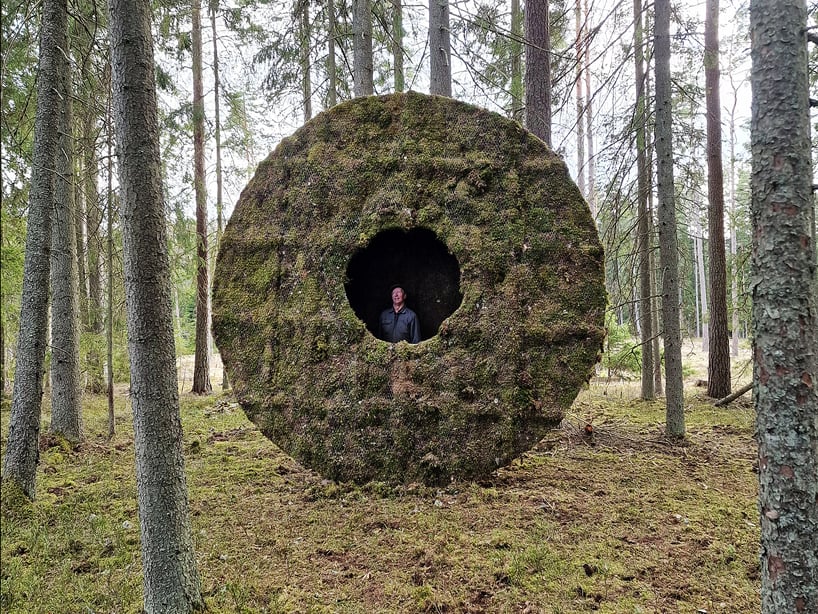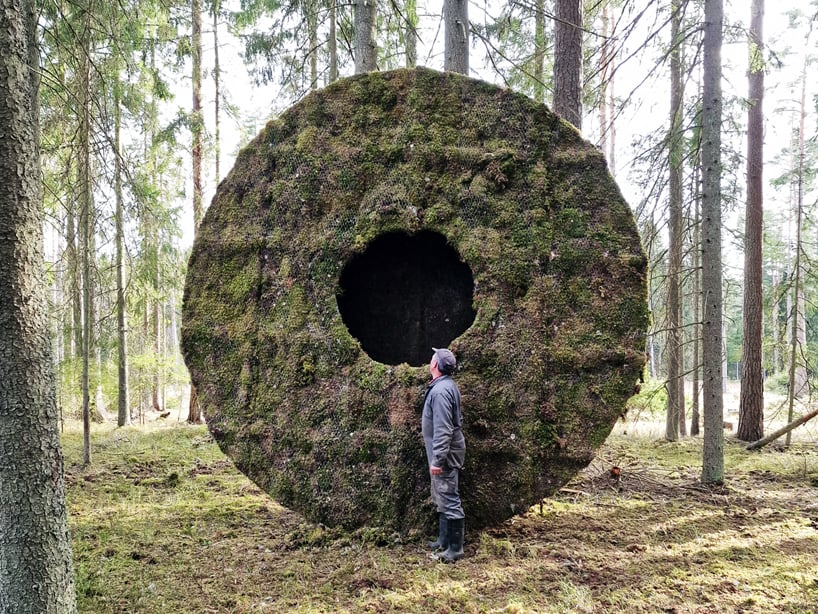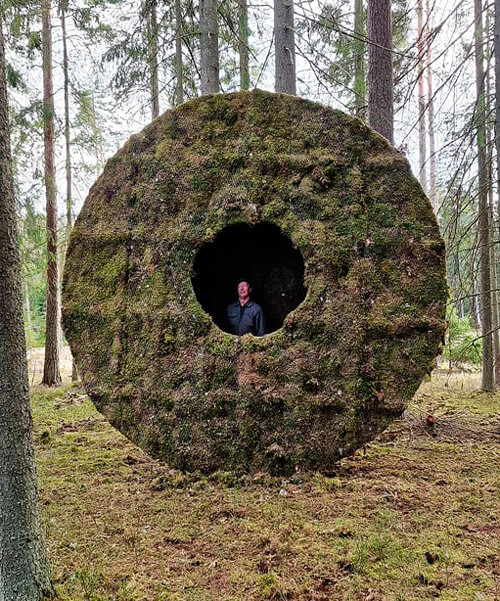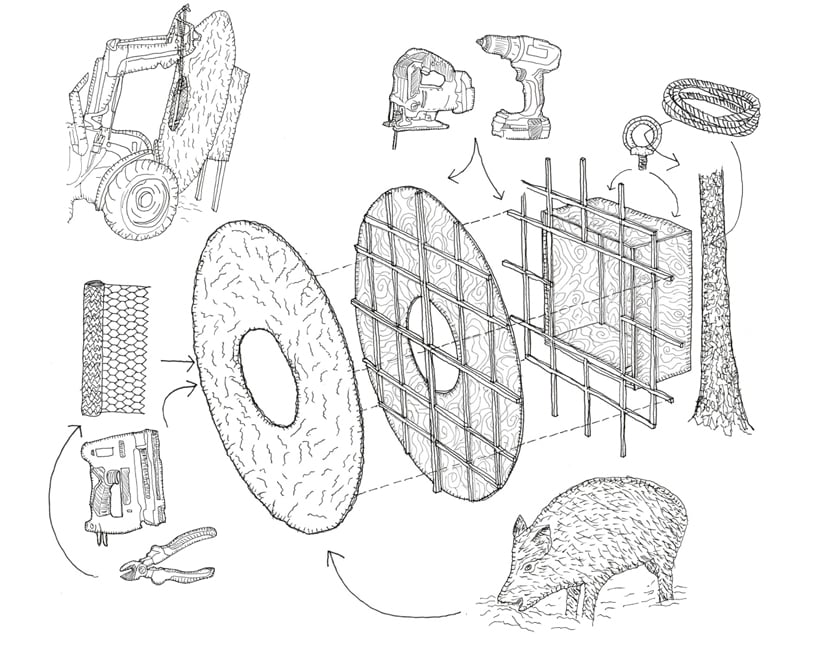Ulf Mejergren Architects (UMA), in partnership with local agricultural expert Robert Pettersson, have jointly erected a temporary pavilion named Moss Hut. Located in the wooded area of Grödinge, Sweden, this undertaking is a component of the broader ‘Farm Art’ initiative. This endeavor comprises diverse projects on Pettersson’s property, melding the farmer’s practical agricultural skills with the design firm’s artistic flair. Particularly motivated by Pettersson’s enthusiasm for hunting, the structure, which utilizes moss as its primary building material, serves as a lure and feeding spot for wild boars in the area.
Construction Materials: Plywood, Moss, and Chicken Wire
Over an extended period, Pettersson has deliberately placed food throughout the forest to attract the wild boars. While this has been effective in attracting the animals, it has also led to collateral damage in the forest ecology, specifically through the upheaval of moss beds. What distinguishes moss from other plants is its distinctive capability to prosper on an array of surfaces. This unique characteristic is facilitated by its rhizoids—a specialized root system. Unlike traditional root systems that absorb nutrients from soil, rhizoids are able to draw both nutrients and water directly from the atmosphere, bypassing the need for soil.

Structural Design of Moss Hut by UMA
The UMA architectural team crafted a circular foundation, measuring 4.5 meters in diameter, out of plywood. A cutout is made at the center of the circle. On the rear end, a sizable plywood box is affixed to a tree. This attachment is secured by ropes, which also hold up the facade of the structure, giving it the appearance of lightly touching the earth’s surface with minimal environmental impact. A diminutive ladder underneath the box facilitates entry. In terms of finishing touches, both the exterior and interior walls of the pavilion are adorned with moss and chicken wire, fastened securely to the plywood surfaces with staples.
Project Information
| Information | |
|---|---|
| Project Name | Moss Hut |
| Lead Designer | Ulf Mejergren Architects (UMA) |
| Location | Grödinge, Sweden |
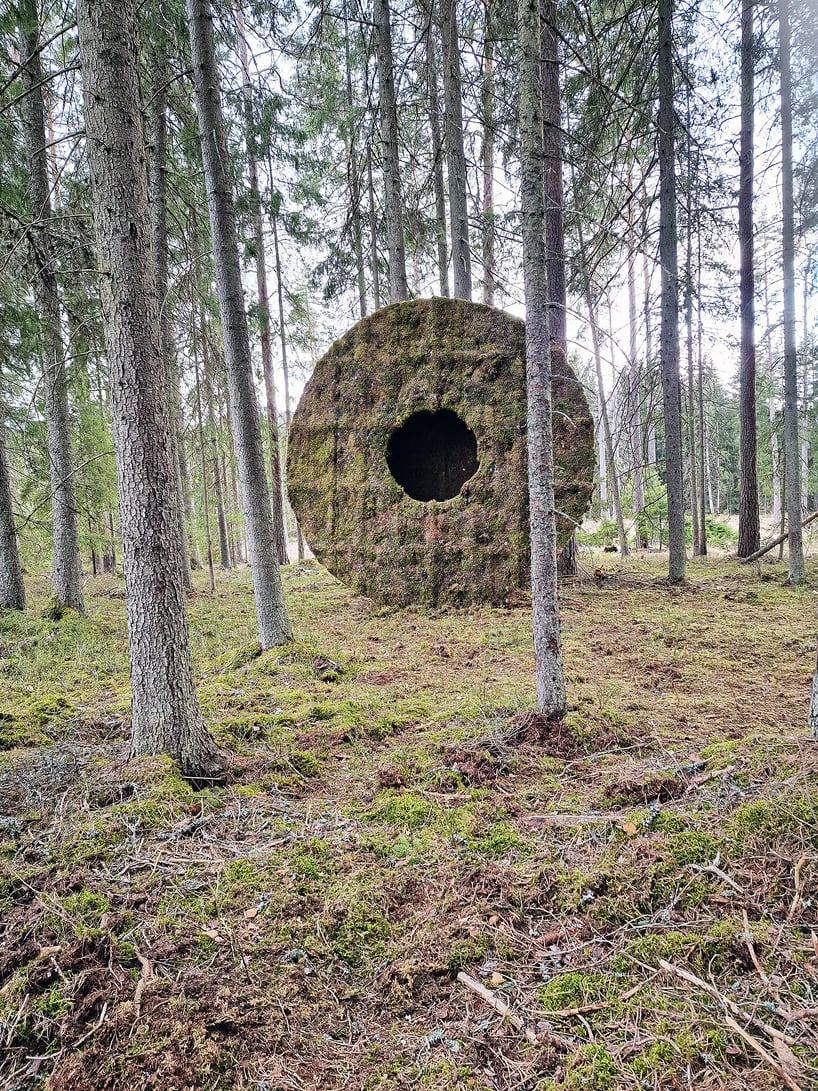
Relevant Facts about Grödinge, Sweden
Grödinge is located in the southern part of Stockholm County, Sweden. It is relatively small in terms of its population, with approximately 5,000 residents. It experiences an oceanic climate characterized by cold winters and mild summers. The official language spoken is Swedish, and the dominant form of currency is the Swedish Krona. While detailed GDP data for Grödinge is not readily available, it is part of Stockholm County, which is one of the wealthiest regions in Sweden. The prevalent religion in the area is Lutheran Christianity, and the region is part of the European continent.
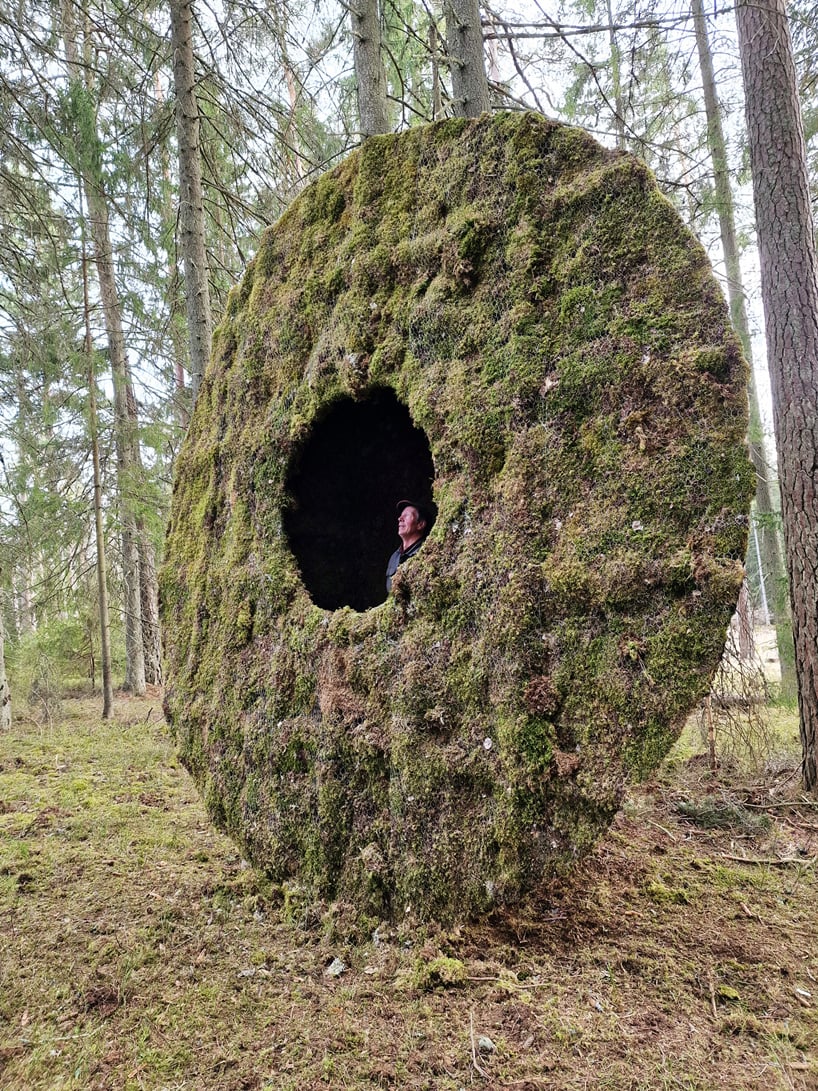
Significance of the Moss Hut Project
The Moss Hut project is not merely an aesthetic undertaking but also serves an ecological purpose. By attracting wild boars to a specific feeding point, the project aims to mitigate the unintentional destruction caused by these animals in their search for food. Additionally, the usage of moss as a primary construction material highlights its unique botanical properties, including its ability to thrive without soil, thereby making a subtle statement about sustainable construction techniques.
The project exemplifies the confluence of agriculture and architecture, showcasing how interdisciplinary collaborations can yield innovative solutions that address ecological challenges while also serving an aesthetic and functional purpose.

The Moss Hut project by UMA and Robert Pettersson is a vivid illustration of how creativity and practical knowledge can collaborate to yield solutions that are as aesthetic as they are functional and as ecologically sustainable as they are innovative.
